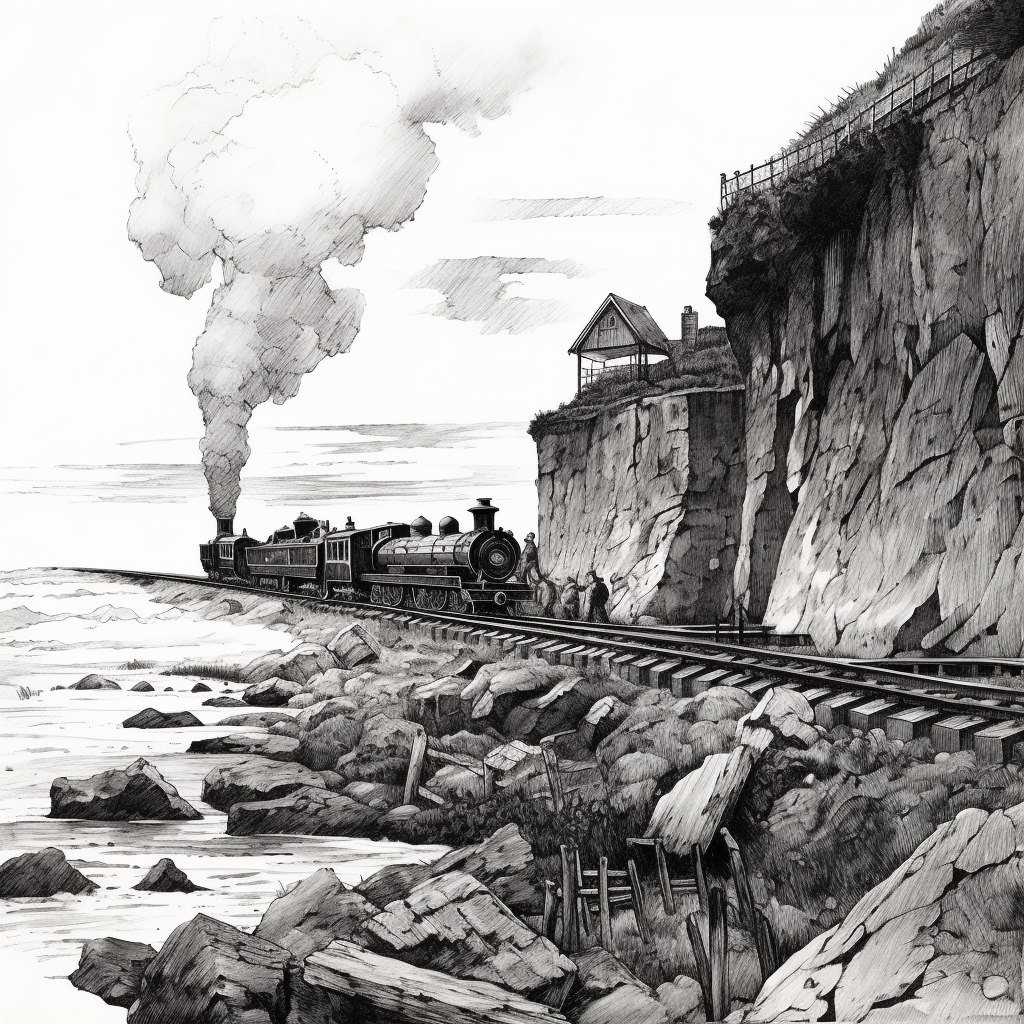The Untold Story of the West Country Oil Boom That Never Happened
The Mystery of the Flammable Rocks at Kilve Pill Beach
There are two clues that show just how close a West Country Area of Outstanding Natural Beauty came to being destroyed by large-scale oil extraction. One is the forlorn brick building topped by an iron chimney which stands just behind the shore at Kilve Pill - the other is the curious fact that people who light barbecues on the beach often watch askance as the rocks catch fire. That is because so much oil is fused in to the shale. Light a fire on this part of the Bristol Channel coast and the rock really does crackle, explode and burn.
The shale oil is infused deep inside Kilve’s rock
A Historical Discovery: Oil-Rich Shale in the Bristol Channel Coast
And it is a phenomenon that has been noticed before. Geological investigations carried out 90 years ago claimed the local rock was even richer in oil than the famous Green River Beds in Colorado, which at the time were believed to be the most oil-drenched shales in the world. The oilfield at Kilve was believed to be huge, containing no less than 10 billion tons of oil-bearing rock. National newspapers at the time carried headlines referring to a kind of Somerset Klondike… “Oil Romance of the West” proclaimed one.
But… And in terms of one of the West Country’s finest landscapes it is a very big “but” indeed - it turned out there were problems when it came to turning Bristol Channel oil into gold…
Last wood remains of old quay at Kilve Pill
The Challenges of Extracting Oil from West Country Shale: Expert Insights
Fortunately for those who love the AONB and the British countryside, the problems have not gone away - at least, according to one leading expert in the field.
Here’s what Exeter-based Ramues Gallois geologist told me a few years ago when I asked about the oilfield at Kilve… “The first, economically insurmountable problem, would not have been the sulphur in the oil but the fact that the organic-rich seams are thin and occur within a succession of mudstones and limestones,” he said referring to the fact that early prospectors partly failed because of filtering impurities from the oil.
“It would not be economic to heat all of these materials to the 450 to 500C necessary to extract oil - so one would have had to dig out large amounts of rock and then separate out the better looking organic-rich beds by hand.”
He said that when geologists talked of shales being “oil-rich” it could mean they contained just 2% to 10% of organic carbons: “So even after separation, much of the material would not be worth retorting.
“Having done the retorting - possibly at a cost that was 10 times the value of the product - what would you be left with? A shale oil rich in NSO (nitrogen, sulphur, oxygen compounds) that would have minimal resale value,” said Mr Gallois.
The shale oil rich shore
The Potential Somerset Oil Bonanza: A Look Back at the Excitement
If only those prospectors had been aware of this on the Somerset coast back in 1920. Trial borings then led them to believe the oilfield was a massive 8000 acres - and experts worked out that this would supply a whopping five million gallons of retorted oil a year.
So excited was Dr W Forbes-Leslie, a leading oil expert, he declared the shale to be “of a class hitherto unknown in England”.
Another expert, Mr Latrett Parking, said the find was “one of the most remarkable formations ever exposed to scientific examination.”
He noted: “In an open grate it burns fiercely with a long flame. From this evidence it would appear to be rich in oil - I am not surprised therefore to find the chemist’s analysis giving yield of from 30 to 99.6 gallons per cubic ton.”
The Railway Plan That Never Materialised: Bridging Kilve and Bridgwater
Plans were drawn up for the building of a railway from Kilve to the port of Bridgwater. Oil experts were looking at an area seven miles long, extending one to two miles inland from the coast - that would have been quarried along high, open faces.
The February 1924 issue of The Petroleum Times was beside itself with excitement. The editor put pen to paper describing the “enormous potentialities” of the Kilve shales: “That the commercial development of the shale deposits will lead to the establishment of an important industry in Somerset is a foregone conclusion,” he wrote.
It wasn’t. All that’s left of this excitement now is the old chimney at Kilve - and local folk will be hoping it stays that way.
Oil infused rock perhaps?











